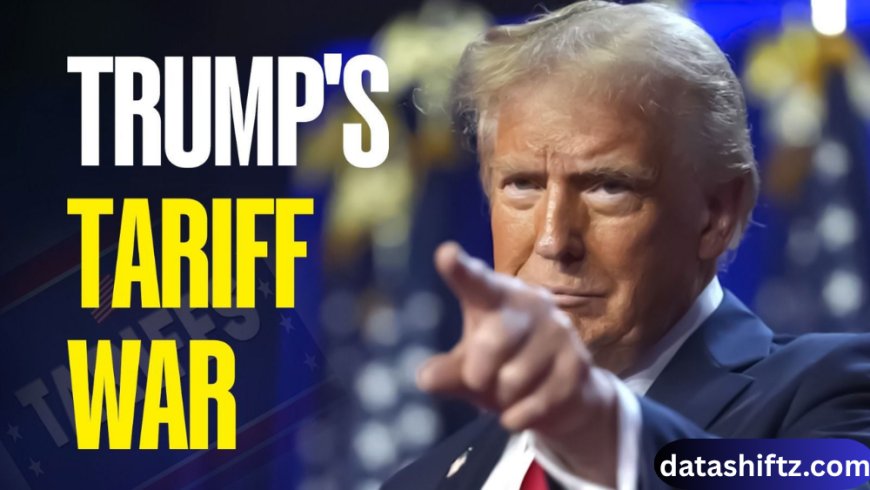Donald Trump Tariff: Impacts, History, and Global Economic Implications

Introduction
The Donald Trump tariff policies marked a significant shift in U.S. trade strategy during his presidency. Aimed at reducing trade deficits and protecting domestic industries, these tariffs had far-reaching effects on global trade, supply chains, and international relations.
Trump’s administration implemented tariffs on goods from countries such as China, the European Union, Canada, and Mexico, sparking debates over economic growth, inflation, and geopolitical consequences. Understanding the history, impact, and ongoing relevance of these tariffs is crucial for economists, businesses, and investors.
This article provides a detailed analysis of Donald Trump tariffs, including historical context, economic effects, sector-wise impact, and international response, presented in tables and list forms for clarity.
History of Donald Trump Tariffs
The Trump administration followed a protectionist trade policy under the banner of “America First.” Tariffs were implemented to encourage domestic manufacturing, reduce trade deficits, and counter unfair trade practices.
Key Tariff Policies
| Year | Target Country / Region | Products / Sectors Affected | Tariff Rate (%) | Purpose / Objective |
|---|---|---|---|---|
| 2018 | China | Steel, Aluminum, Electronics | 10-25 | Reduce trade deficit, protect US jobs |
| 2018 | European Union | Steel, Aluminum | 25 / 10 | Promote fair trade |
| 2018 | Canada & Mexico | Steel, Aluminum | 25 / 10 | Protect domestic industry |
| 2019 | China | Various goods worth $200B | 10-25 | Retaliation for intellectual property issues |
| 2020 | India | Steel, Aluminum | 25 / 10 | Protect local industries |
Economic Impact of Trump Tariffs
Trump’s tariffs had diverse effects on the U.S. economy, global trade, and specific sectors.
Economic Impact
| Impact Category | Positive Effects | Negative Effects |
|---|---|---|
| Domestic Manufacturing | Boost in steel and aluminum production | Increased production costs for manufacturers |
| Employment | Short-term job creation in protected sectors | Job losses in export-dependent industries |
| Consumer Prices | Encouraged local sourcing | Higher costs for imported goods, inflation |
| Trade Deficit | Slight reduction with some countries | Widened with others due to retaliatory tariffs |
| Global Supply Chains | Encouraged domestic production | Disrupted global supply chains, increased uncertainty |
| Corporate Earnings | Benefited domestic producers | Hurt companies reliant on imports/raw materials |
Sector-Specific Impacts
-
Steel & Aluminum – Boosted domestic production but increased costs for automotive and construction sectors.
-
Technology – Tariffs on Chinese electronics increased hardware prices in the U.S.
-
Agriculture – Retaliatory tariffs from China and Mexico reduced demand for U.S. crops like soybeans.
-
Automotive – Higher costs for imported parts affected assembly and consumer prices.
-
Retail – Increased import costs led to higher prices for consumer goods.
-
Energy – Some energy exports faced reduced competitiveness due to tariffs.
-
Small Businesses – Suffered from higher import costs and supply chain disruptions.
-
Global Investors – Market volatility increased due to trade tensions.
-
Supply Chain Realignment – Companies moved sourcing to alternative countries like Vietnam, India, and Mexico.
-
Job Market Shifts – Short-term gains in protected industries offset by long-term losses elsewhere.
Global Response and Trade Wars
Trump tariffs triggered a series of trade negotiations and disputes with several countries.
Global Response
| Country / Region | Response / Retaliation | Outcome |
|---|---|---|
| China | Retaliatory tariffs on U.S. goods | Escalation of trade war, Phase One deal in 2020 |
| European Union | Threats of counter-tariffs, negotiation | Reduced tension after negotiations |
| Canada | Tariffs on U.S. steel & aluminum | NAFTA renegotiation (USMCA) |
| Mexico | Reciprocal tariffs on metals | USMCA implementation |
| India | Tariffs on U.S. steel, almonds, and other goods | Negotiated tariff reductions |
Tariffs reshaped global trade alliances and prompted long-term strategic shifts in sourcing and supply chains.
Pros and Cons of Trump Tariffs
Advantages
-
Protected domestic industries from foreign competition.
-
Encouraged some reshoring of manufacturing jobs.
-
Addressed concerns over trade deficits.
-
Pressured countries to negotiate fairer trade agreements.
-
Boosted certain sectors like steel and aluminum.
Disadvantages
-
Higher costs for consumers and businesses reliant on imports.
-
Retaliatory tariffs harmed U.S. exporters, especially farmers.
-
Increased uncertainty in global supply chains.
-
Short-term gains often offset by long-term economic inefficiencies.
-
Contributed to global trade tensions and market volatility.
Trump Tariffs and the Stock Market
Tariffs created volatility in U.S. and global stock markets, impacting investors and businesses.
Market Reaction to Key Tariff Announcements
| Date | Tariff Announcement | Market Reaction |
|---|---|---|
| Mar 2018 | Steel & Aluminum tariffs | S&P 500 dipped 0.8%, Dow fell 1% |
| Jul 2018 | Tariffs on $34B Chinese goods | Tech stocks fell sharply, investors concerned |
| Sep 2018 | Retaliatory Chinese tariffs | Dow and Nasdaq saw temporary declines |
| May 2019 | $200B Chinese goods tariffs | Increased volatility, cautious investor sentiment |
| Jan 2020 | Phase One trade deal signed | Market rallied, renewed investor optimism |
Insight: Tariff announcements often caused short-term volatility, with long-term impacts dependent on trade negotiations and policy clarity.
Conclusion
The Donald Trump tariff policies represented a dramatic shift in U.S. trade policy, aiming to protect domestic industries and reduce trade deficits. While some sectors benefited from increased protection, others faced higher costs, reduced exports, and supply chain challenges.
Investors, businesses, and policymakers must consider the complex interplay of tariffs, retaliatory measures, and global economic impacts when evaluating the overall effectiveness of these policies.





























